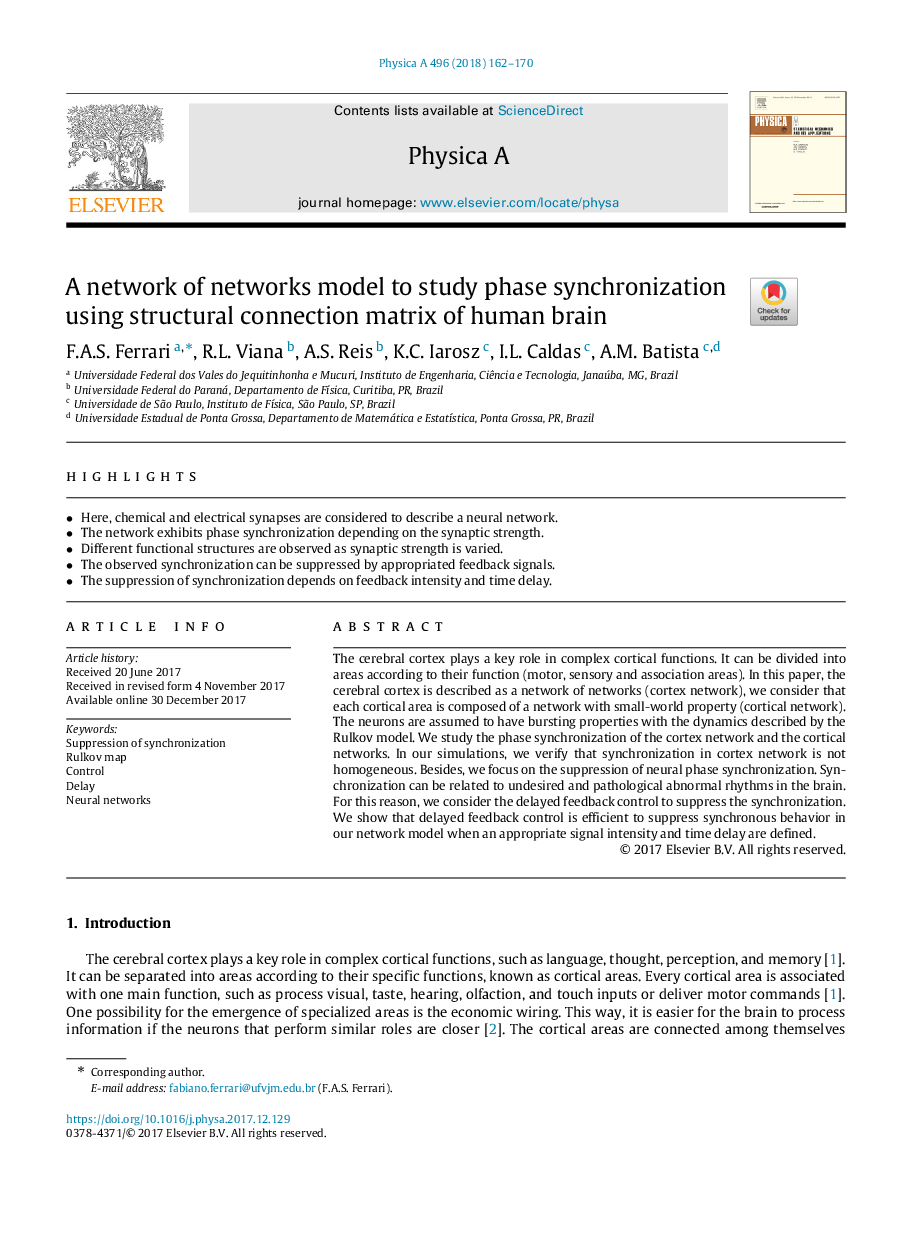| Article ID | Journal | Published Year | Pages | File Type |
|---|---|---|---|---|
| 7376113 | Physica A: Statistical Mechanics and its Applications | 2018 | 9 Pages |
Abstract
The cerebral cortex plays a key role in complex cortical functions. It can be divided into areas according to their function (motor, sensory and association areas). In this paper, the cerebral cortex is described as a network of networks (cortex network), we consider that each cortical area is composed of a network with small-world property (cortical network). The neurons are assumed to have bursting properties with the dynamics described by the Rulkov model. We study the phase synchronization of the cortex network and the cortical networks. In our simulations, we verify that synchronization in cortex network is not homogeneous. Besides, we focus on the suppression of neural phase synchronization. Synchronization can be related to undesired and pathological abnormal rhythms in the brain. For this reason, we consider the delayed feedback control to suppress the synchronization. We show that delayed feedback control is efficient to suppress synchronous behavior in our network model when an appropriate signal intensity and time delay are defined.
Keywords
Related Topics
Physical Sciences and Engineering
Mathematics
Mathematical Physics
Authors
F.A.S. Ferrari, R.L. Viana, A.S. Reis, K.C. Iarosz, I.L. Caldas, A.M. Batista,
